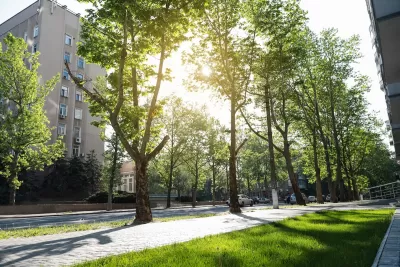Cal Poly, in partnership with Cal Fire, is leading the development of California’s new Strategic Plan for Urban Forestry, combining advanced data tools and interdisciplinary collaboration to expand tree canopy cover.

Cal Poly has been awarded a contract to develop California’s new Strategic Plan for Urban Forestry, in collaboration with Cal Fire and driven by Assembly Bill 2251. As reported by Emily Slater, this ambitious initiative aims to increase statewide tree canopy cover by 10% by 2035, addressing climate change, improving air quality, and fostering equity in green space access. The project, led by Cal Poly’s Urban Forest Ecosystems Institute (UFEI) and spearheaded by biological sciences professor Jenn Yost, leverages cutting-edge data and tools like SelecTree to guide urban forestry management. The plan focuses on expanding canopy cover in disadvantaged communities most affected by extreme heat and limited access to shade.
UFEI’s expertise in urban forestry, backed by advanced neural network-powered mapping techniques that have identified 40 million trees statewide, will inform policies and strategies to ensure equitable distribution of urban forest benefits. The strategic plan emphasizes resilience through biodiversity, actionable goals for cities, and stakeholder engagement to maximize community impact. According to UFEI director Matt Ritter, addressing California’s status as the most urbanized state with the lowest per capita canopy cover is critical to reversing environmental disparities and preparing for climate challenges.
This yearlong effort involves coordination with tribal nations, nonprofits, local governments, and tree professionals to create a comprehensive and inclusive plan. By June 2025, the final roadmap will be delivered to the state legislature, offering data-driven strategies to promote canopy growth and enhance urban forest resilience. Through interdisciplinary collaboration, Cal Poly is poised to deliver transformative solutions to improve urban ecosystems and foster thriving, equitable communities across California.
FULL STORY: Cal Poly to Lead Development of California’s New Urban Forestry Strategic Plan

Trump Administration Could Effectively End Housing Voucher Program
Federal officials are eyeing major cuts to the Section 8 program that helps millions of low-income households pay rent.

Planetizen Federal Action Tracker
A weekly monitor of how Trump’s orders and actions are impacting planners and planning in America.

Ken Jennings Launches Transit Web Series
The Jeopardy champ wants you to ride public transit.

Washington Legislature Passes Rent Increase Cap
A bill that caps rent increases at 7 percent plus inflation is headed to the governor’s desk.

From Planning to Action: How LA County Is Rethinking Climate Resilience
Chief Sustainability Officer Rita Kampalath outlines the County’s shift from planning to implementation in its climate resilience efforts, emphasizing cross-departmental coordination, updated recovery strategies, and the need for flexible funding.

New Mexico Aging Department Commits to Helping Seniors Age ‘In Place’ and ‘Autonomously’ in New Draft Plan
As New Mexico’s population of seniors continues to grow, the state’s aging department is proposing expanded initiatives to help seniors maintain their autonomy while also supporting family caregivers.
Urban Design for Planners 1: Software Tools
This six-course series explores essential urban design concepts using open source software and equips planners with the tools they need to participate fully in the urban design process.
Planning for Universal Design
Learn the tools for implementing Universal Design in planning regulations.
Heyer Gruel & Associates PA
Ada County Highway District
Institute for Housing and Urban Development Studies (IHS)
City of Grandview
Harvard GSD Executive Education
Toledo-Lucas County Plan Commissions
Salt Lake City
NYU Wagner Graduate School of Public Service





























